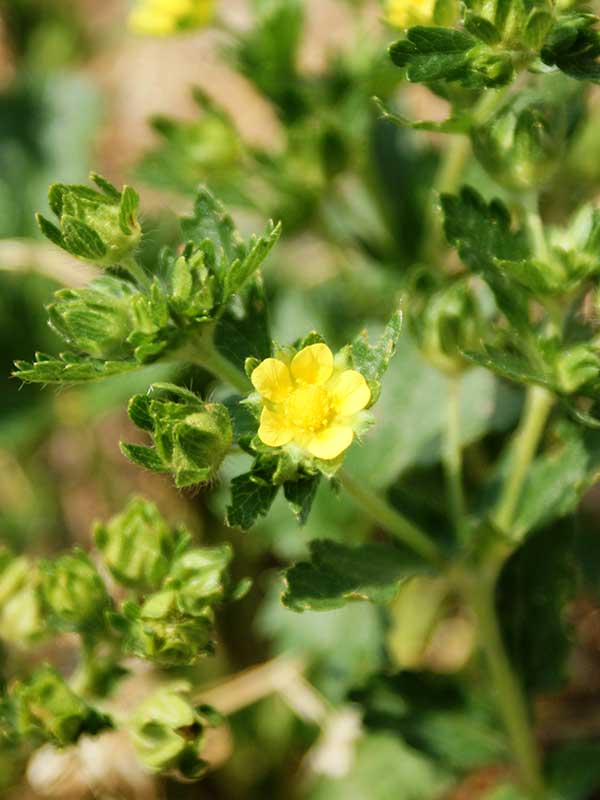Potentilla norvegica / rough cinquefoil
- 5 yellow petals, not fused
- 5 sepals longer than petals, esp. after flowering
- numerous stamens and pistils
- compound leaves with leaflets grouped in 3s
- prominent veins; toothed margins
- hairy stems
- mostly in disturbed areas, including gardens
Also known as: ternate-leaved cinquefoil, Norwegian cinquefoil, snowy cinquefoil, strawberryweed, upright cinquefoil
Rough cinquefoil is usually an annual but may be biennial or a short-lived perennial. It is native to North America but has also been introduced from Europe and Asia. Like other cinquefoils, it has yellow flowers, each with 5 rounded petals and sepals. The petals are small (< ¼ in) and separate, not fused. The sepals are longer than the petals, often hairy and pointed with reddish tips. Like other members of the family, there are many (e.g. 20) stamens – in this case with yellow tips – and many pistils. The inflorescence is a cyme with several flowers.
After flowering, the sepals lengthen and form the shell of the capsule containing the individual seeds. The fruit doesn’t split open when ripe. The plants spread by seed.
Rough cinquefoil leaves are compound in 3s. The basal leaves are the largest and have the longest petioles. Upper leaves are smaller and lack petioles. The individual leaflets of the basal leaves are up to 3 inches long and 1½ inch wide. They have rounded tips, and taper at the base. The margins have obvious coarse teeth. The veins are prominent. The terminal leaflets may be lobed but the lateral ones are not. The basal leaves have narrow, sharp-tipped stipules. Upper leaves also have stipules, but they are elliptical and longer than the petioles.
The stems may be reddish or green, and are densely covered in long hairs that are stiff and spreading, often with a purplish “pustule” at the base. Leaves may also be hairy.
Rough cinquefoil’s natural habitat has been described as arable fields, gardens, banks, hedgerows, wasteland, logging clearings, loading areas and occasionally shores, often on sandy or gravelly soils. It needs full sun to thrive. I find it interesting that its “natural habitat” is anthropogenic disturbance. That probably reflects the ubiquity of manmade disturbance in Europe.
| Color | |
|---|---|
| Family | |
| Blossom size | |
| Inflorescence size | |
| Inflorescence type | |
| When? | |
| Where? |

